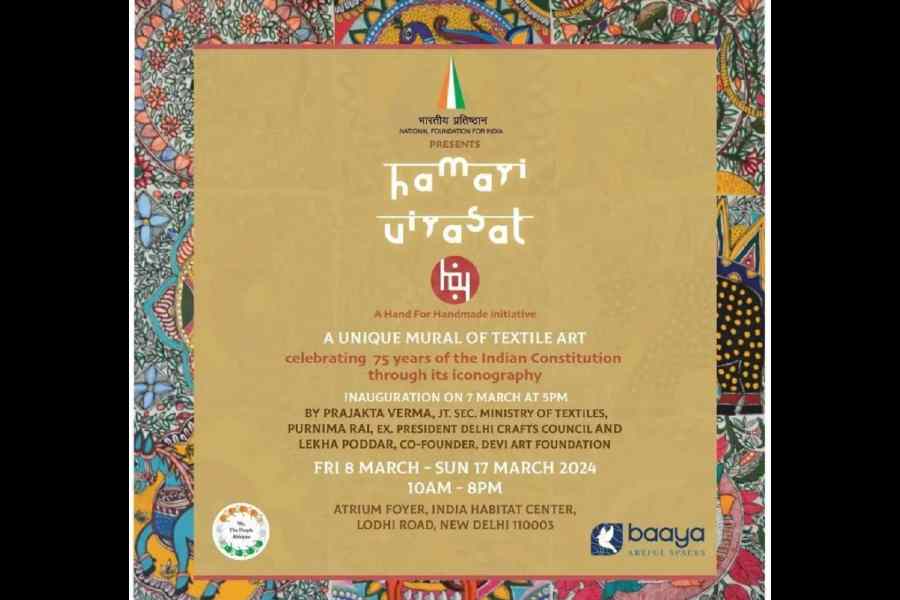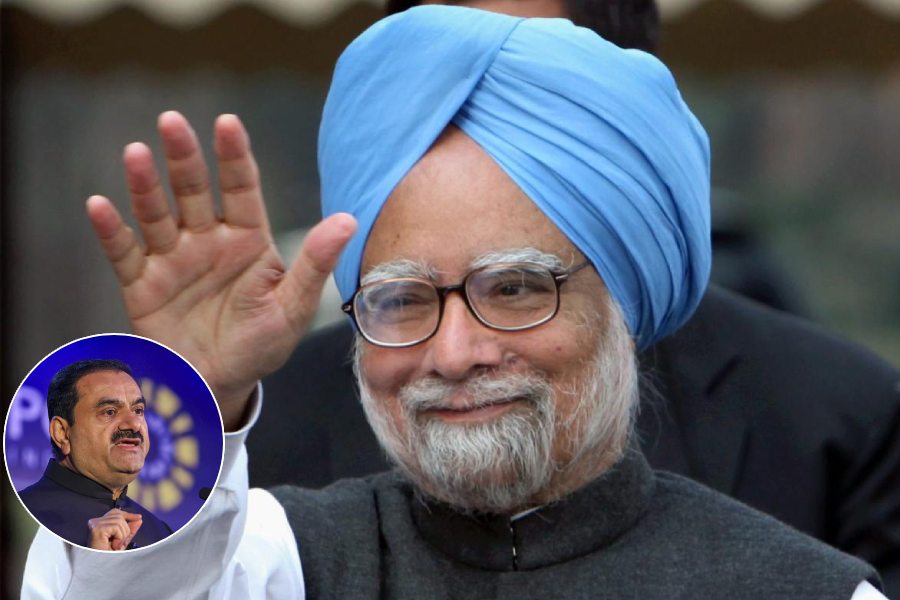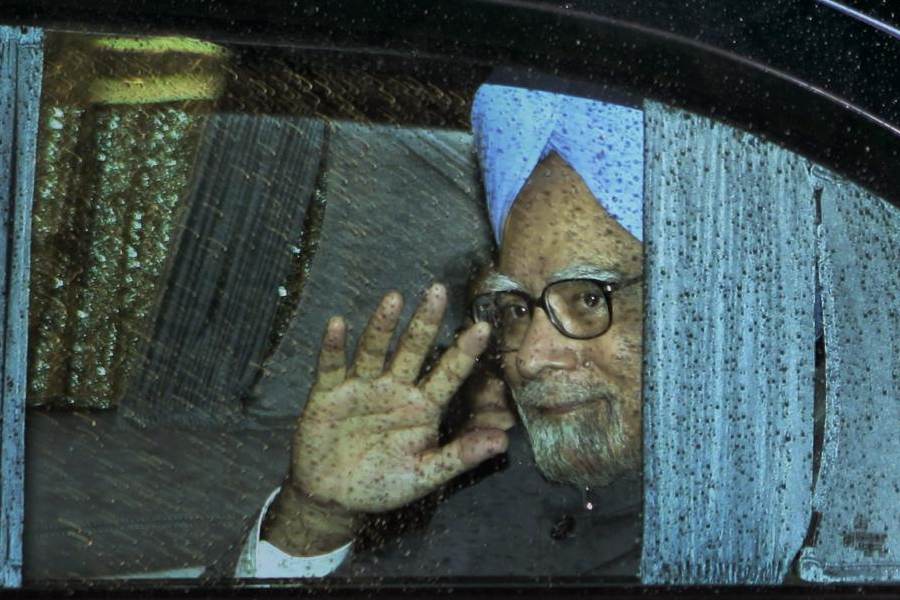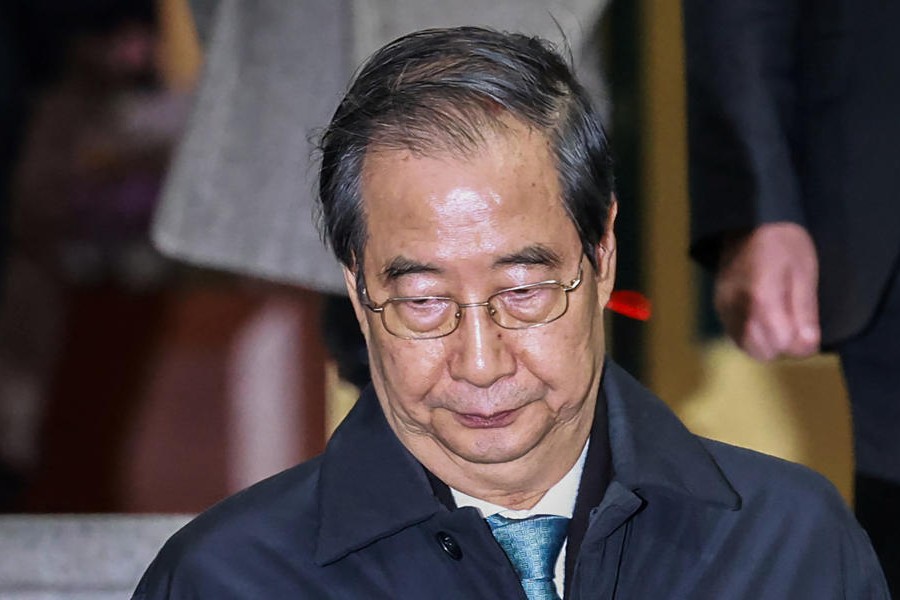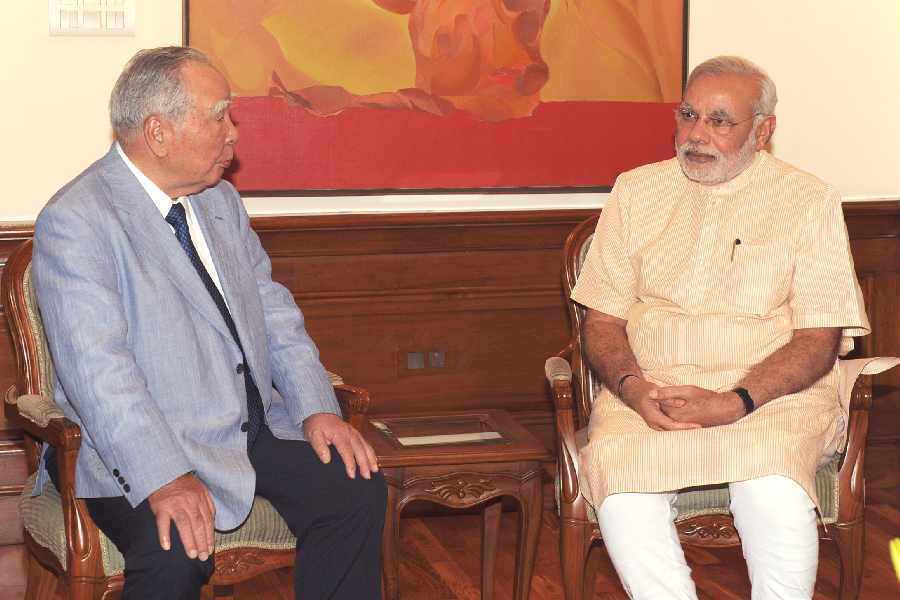The Indian Constitution is celebrating the 75th year of its endurance. Gradually, the Constitution has become a document for the popular discourse. This transition is manifested in different forms like art, songs, and poetry. One such unique manifestation was seen in the form of an exhibition, Hamari Virasat, at the India Habitat Centre, New Delhi. The exhibition was organised by the National Foundation for India, We, The People Abhiyan, and Hand for Handmade.
The exhibition included 75 textile mural paintings by 75 women across India which gave different meanings to the Constitution. For instance, the mural by the women artisans from Kutch depicted lions, peacocks, bulls and horses embroidered in Kutch’s diverse styles to honour the Constitution’s role in keeping a diverse nation together. Similarly, the mural from Jammu and Kashmir made by the artist, Vandana, featured the lotus, which is a part of the Constitution, while the animal representations by the Dokra artisans represented the preambular values of unity and diversity. The work of 75 women artisans from different states not only reflects diversity and unity but also depicts the Constitution’s values. This effort by women artisans is a reminder that our Constitution, like the textile murals, was prepared by members with diverse backgrounds and having different ideologies.
Vasco da Silva, a professor at the University of Lisbon, has argued that “Culture and Constitution have a ‘loving relationship’ between each other that can be seen both from the perspective of the Constitution as a cultural reality and the perspective of the cultural Constitution.” India’s Constitution, notably, has an intrinsic relationship with the arts. It portrays different artistic traditions, such as those of the Ajanta caves, Odia school of art, Chola art, Deccani miniatures and so on. The calligraphist, Prem Behari Narain Raizada, had written the Constitution by hand, while Nandalal Bose had done the artwork. Bose was highly inspired by indigenous cultures and, hence, created a new visual aesthetic. The Ajanta and Bagh murals in the Constitution reflect Bose’s artistic creativity. This history forms the basis of the contemporary engagement with the Constitution through art forms. In recent years, different communities have engaged with the Constitution through songs and art and shaped its meaning through their own culture.
Civil society organisations have engaged women artisans to deliver the meaning enshrined in the Constitution through art to transform the Constitution into a document that can be used in everyday life. Such an initiative also delivers the message that women are at the centre of such endeavours.
Hamari Virasat not only featured murals prepared by women artisans but also contained posters of the 15 women members of the Constituent Assembly. Rohit De and Ornit Shani, noted public intellectuals working on the Constitution, have argued that much of the work of Constitution-making, in fact, took place in informal conversations and private chats. Among its other contributions, the exhibition
was an important reminder that the Constitution also operates beyond an institutional set-up.
Rajesh Ranjan is a lawyer-researcher based in Delhi. The author would like to acknowledge Mahtab Alam, Vinita Singh and Nagesh Jadhav

